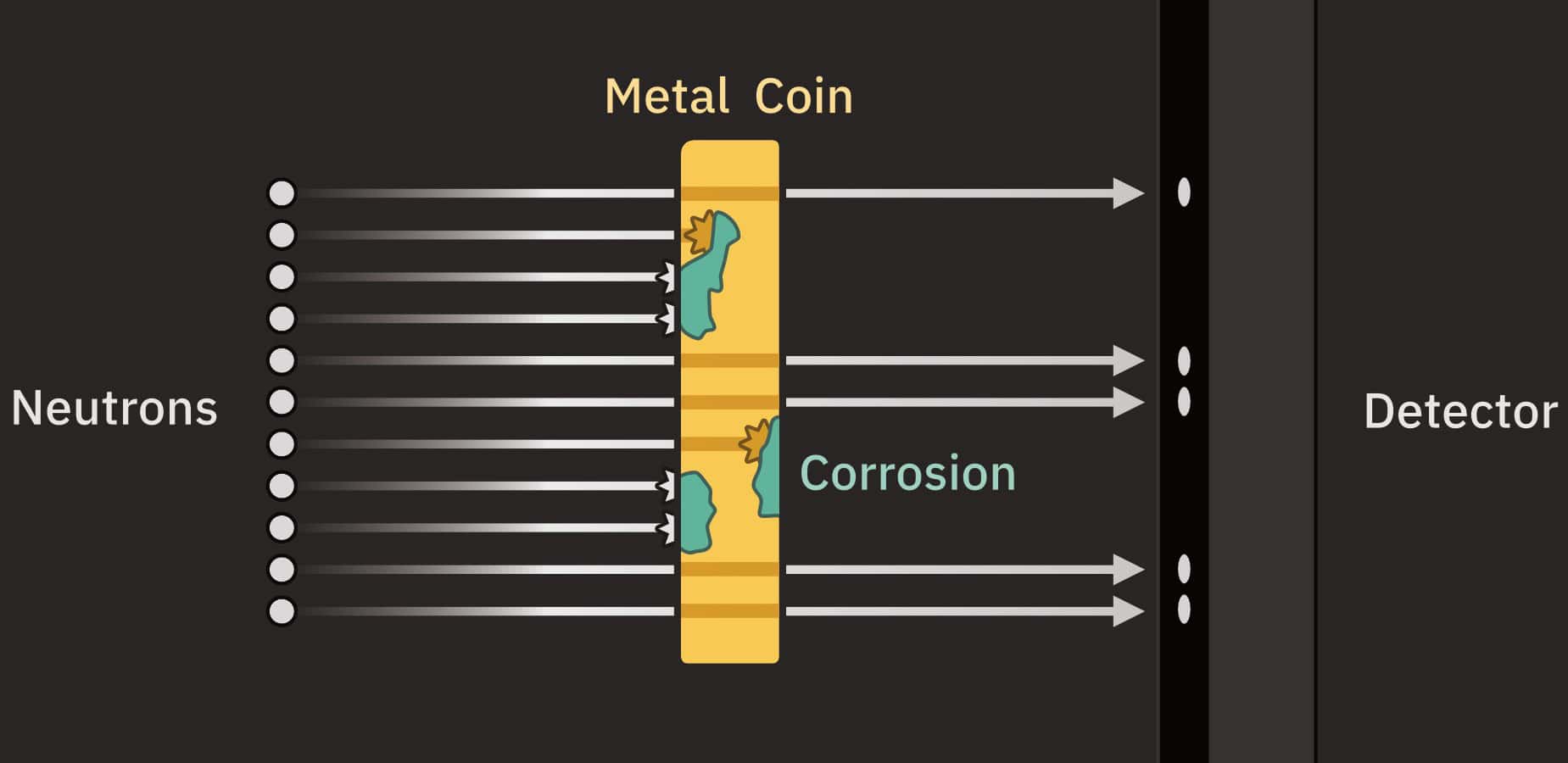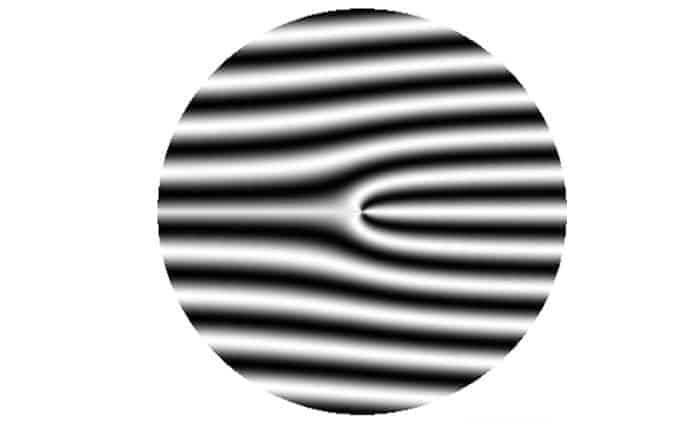
The presence of hydrogen in a sample is usually a bad thing in neutron scattering experiments, but now researchers in the US have turned the tables on the lightest element and used it to spot fake antique coins.
The scattering of relatively slow moving neutrons from materials provides a wide range of structural information. This is because these “cold” neutrons have wavelengths on par with the separations of atoms in a materials. However, materials that contain large amounts of hydrogen-1 nuclei (protons) can be difficult to study because hydrogen is very good at scattering neutrons in random directions – creating a noisy background signal. Indeed, biological samples containing lots of hydrogen are usually “deuterated” – replacing hydrogen with deuterium – before they are placed in a neutron beam.
However, there are some special cases where this incoherent scattering of hydrogen can be useful – measuring the water content of samples, for example.
Surfeit of hydrogen
Now, researchers in the US and South Korea have used a neutron beam to differentiate between genuine antique coins and fakes. The technique relies on the fact that the genuine coins have suffered corrosion that has resulted in the inclusion of hydrogen-bearing compounds within the coins.
Led by Youngju Kim and Daniel Hussey at the National Institute of Standards and Technology (NIST) in Colorado, the team fired a parallel beam of neutrons through individual coins (see figure). The particles travel with ease through a coin’s original metal, but tend to be scattered by the hydrogen-rich corrosion inclusions. This creates a 2D pattern of high and low intensity regions on a neutron-sensitive screen behind the coin. The coin can be rotated and a series of images taken. Then, the researchers used computed tomography to create a 3D image showing the corroded regions of a coin.
The team used this neutron tomography technique to examine an authentic 19th century coin that was recovered from a shipwreck, and on a coin that is known to be a replica. Although both coins had surface corrosion, the corrosion extended much deeper into the bulk of the authentic coin than it did in the replica.
The researchers also used a separate technique called neutron grating interferometry to characterize the pores in the surfaces of the coins. Pores are common on the surface of coins that have been buried or submerged. Authentic antique coins are often found buried or submerged, whereas replica coins will be buried or submerged to make them look more authentic.
Small-angle scattering
Neutron grating interferometry looks at the small-angle scattering of neutrons from a sample and focuses on structures that range in size from about 1 nm to 1 micron.
The team found that the authentic coin had many more tiny pores than the replica coin, which was dominated by much larger (millimetre scale) pores.

Neutron holograms image the interiors of objects
This observation was expected because when a coin is buried or submerged, chemical reactions cause metals to leach out of its surface, creating millimetre-sized pores. As time progresses, however, further chemical reactions cause corrosion by-products such as copper carbonates to fill in the pores. The result is that the pores in the older authentic coin are smaller than the pores in the newer replica coin.
The team now plans to expand its study to include more Korean coins and other metallic artefacts. The techniques could also be used to pinpoint corrosion damage in antique coins, allowing these areas to be protected using coatings.
As well as being important to coin collectors and dealers, the ability to verify the age of coins is of interest to historians and economists – who use the presence of coins in their research.
The study was done using neutrons from NIST’s research reactor in Maryland. That facility is scheduled to restart in 2026 so the team plans to continue its investigation using a neutron source in South Korea.
The research is described in Scientific Reports.



